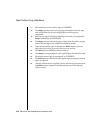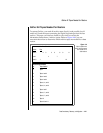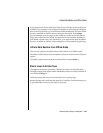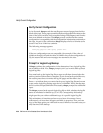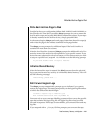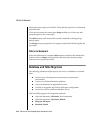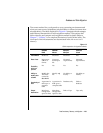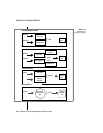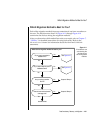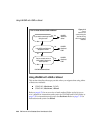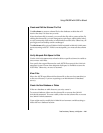
4-54 IBM Informix OnLine Database Server Administrator’s Guide
Description of Migration Methods
Description of Migration Methods
This section provides an overview of how each data migration method
works. Figure 4-10 on page 4-56 illustrates the four migration methods. This
section does not attempt to compare the methods. Comparisons and
contrasts begin on page 4-57.
Refer to Chapter 7, “Utilities,” for a complete discussion of each OnLine
utility. The LOAD and UNLOAD statements are documented the DB-Access
User’s Manual.
UNLOAD/dbschema/LOAD
The DB-Access UNLOAD statement writes the rows retrieved in a SELECT
statement to a delimited ASCII file. A parameter in the UNLOAD statement
enables you to specify a field-delimiting character for the ASCII file. The
UNLOAD statement creates the ASCII input file of migration data.
The database server utility dbschema writes the SQL statements needed to
replicate the specified database or table to an ASCII file. The dbschema
output file can be modified with a system editor or run as is to create the
database or table that will receive the migration data.
The DB-Access LOAD statement inserts data from one or more of the
delimited ASCII input files created by UNLOAD into one or more tables
created from a dbschema output file.
UNLOAD/dbschema/dbload
The UNLOAD statement and dbschema utility perform the same preparation
tasks in this method as described in the preceding paragraph. The database
server utility dbload takes one or more ASCII input files created by UNLOAD
and inserts the data into one or more specified tables created from a
dbschema output file. The dbload utility inserts the data as directed by a
command file that is created by the user. The user can specify additional
instructions at the command line when dbload is executed.



